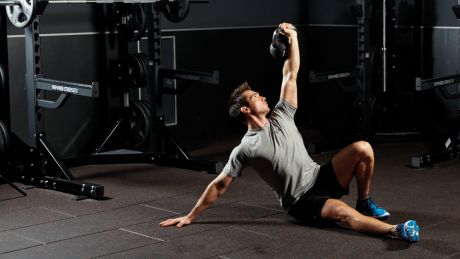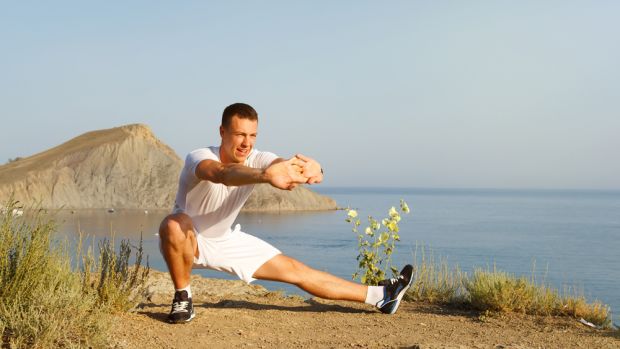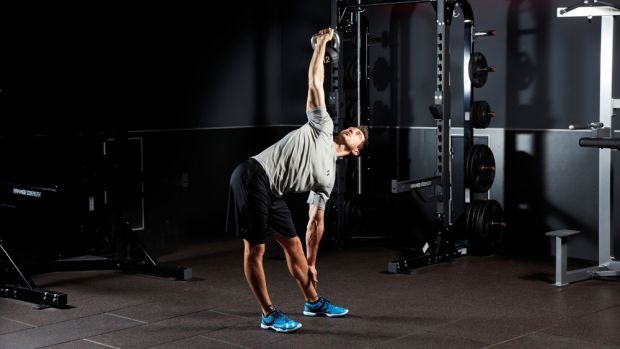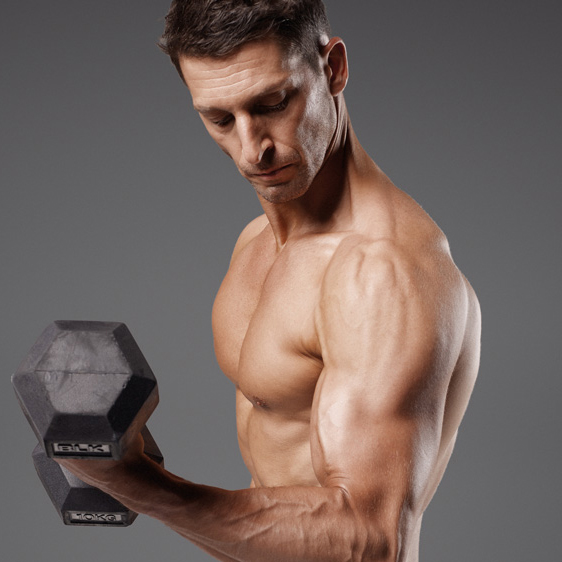Unilateral Exercises To Add To Your Training
If lunges are the limit of your unilateral training, add these single-limb moves to your workout – and ramp up your gains

Most of us have a dominant side to our body, which for the right- or left-handed is easy to recognise. Even if you’re ambidextrous, changes are you have a stronger side to your body too, although it may be harder to tell.
One way to identify your dominant side is by doing unilateral exercises. If you stick purely to moves like the bench press, back squat or barbell row, your dominant side might be doing the lion’s share of the work without you realising, which means your weaker side isn’t getting stronger and the imbalance in your body could lead to injuries.
Unilateral moves work one side of the body at a time, so there’s no hiding place for your weaker side. It’s the perfect way to spot any imbalances and then work on them. If you find you’re able to lift a heavier weight or complete more flawless reps on one side than the other, then it’s time to even things up by focusing on the weaker side. These exercises have all been picked to do just that.
Kettlebell Turkish get-up
“Mastering your own bodyweight should be a training priority, regardless of your goal,” says trainer Ashton Turner of Evolve353. “The Turkish get-up is great for that because it’s a complex movement that involves a huge range of motion. In the simplest terms, you go from lying to standing while holding a weight above your head and it works almost every muscle. There’s also a conditioning benefit because the movement will raise your heart rate.”
Cossack squat

“Training your adductors will let you get more out of the traditional squat,” says S&C coach Joel Dowey. “Cossack squats are ideal – add them to your warm-up. It’s better to perform them deeper at bodyweight than to add some resistance.” Sit on the flat of one foot with your other leg extended, toes pointing up and heel on the floor. Slowly shift your weight across to hit the same position on the other side.
Single-arm overhead loaded walking lunge
“A bit of a mouthful, but a fantastic rotational and lumbar supportive exercise,” says Dowey. “The ability to maintain a neutral spine, without compensation elsewhere, generally has a good carry-over to performance.”
Kettlebell windmill

“Brace your entire core and you’ll strengthen midsection muscles such as your obliques and serratus anterior as well as improving shoulder stability and hamstring flexibility,” says Turner. “Start light and progress when you’ve nailed the movement pattern.” Press the bell overhead, then lean your torso forwards and to one side so that your free hand travels down your leg. Keep your arm and back straight throughout.
Get the Coach Newsletter
Sign up for workout ideas, training advice, reviews of the latest gear and more.
Isometric holds
“If your aim is hypertrophy, maintaining isometric holds while the other limb works creates an opportunity for extra time under tension,” says Dowey. “For example, the double cable low row. You need a cable low row with two stacks or two cables. Row them both as normal but then hold one in the contracted position while the other works for X amount of reps. Swap over and do the same. Finish with some double arm movements.”
Single-arm cable flye
“These are a favourite of mine,” says Dowey. “With the cable at chest height, perform a flye so that your elbow crosses the midline of your body. This movement does two things: one, it makes you aware of what it’s like to contract the pec fully and two, it helps to fully activate the pec minor before bench pressing. You can also use it as a finisher for upper body day.”

Joe Warner is a highly experienced journalist and editor who began working in fitness media in 2008. He has featured on the cover of Men’s Fitness UK twice and has co-authored Amazon best-sellers including 12-Week Body Plan. He was the editor of Men’s Fitness UK magazine between 2016 and 2019, when that title shared a website with Coach.
